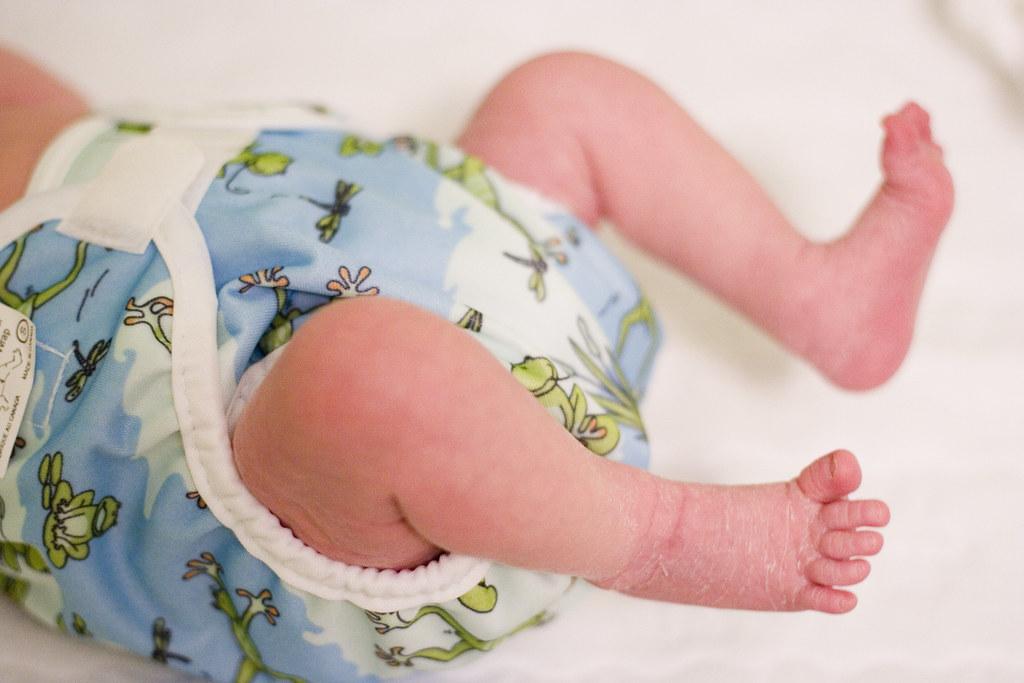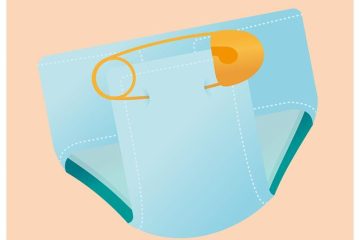As babies grow and milestones are reached, the way we care for them evolves too. One essential aspect of this journey is diaper usage. Understanding how diaper needs change with age can help parents navigate the world of childcare more smoothly. From the tiniest newborns to the energetic toddlers, each stage brings its own unique challenges and joys when it comes to diapering. Let’s explore the fascinating evolution of diaper usage by age and how it shapes the daily routine of both little ones and their caregivers.
Table of Contents
- Understanding Diaper Needs as Your Baby Grows
- Choosing the Right Diaper Size for Each Developmental Stage
- Managing Diaper Changes Effectively Throughout Different Ages
- Tips and Tricks for Optimal Diaper Usage by Age
- Q&A
- To Wrap It Up


Understanding Diaper Needs as Your Baby Grows
As your baby grows, their diaper needs evolve, requiring careful consideration to ensure comfort and protection. Understanding the changing requirements based on their age is crucial for maintaining a happy and healthy baby. Let’s explore how your diaper choices can adapt to your little one’s developmental stages.
Newborns (0-3 months):
- Newborns typically require up to 10 diaper changes per day.
- Opt for soft and gentle diapers with a wetness indicator to monitor changes.
- Ensure a snug fit around the legs to prevent leaks and provide maximum comfort.
Infants (4-12 months):
- Infants may need around 8 diaper changes daily, depending on their feeding habits.
- Consider diapers with added absorption for longer wear during naps and overnight.
- Look for breathable materials to prevent skin irritation and maintain freshness throughout the day.
| Age Group | Diaper Changes per Day | Key Considerations |
|---|---|---|
| Newborns | Up to 10 | Soft, wetness indicator, snug fit |
| Infants | Around 8 | Added absorption, breathable materials |


Choosing the Right Diaper Size for Each Developmental Stage
Deciding on the right diaper size for your little one can be a crucial task as they grow and develop. **Ensuring that the diaper fits properly is essential for both comfort and leak prevention**. Infants and toddlers go through rapid growth spurts, so it’s important to be mindful of when to switch to a larger size.
As newborns transition into their first months, they typically start with size newborn or size 1 diapers. These sizes are designed for their tiny frames and frequent diaper changes. As they grow and become more active, you may notice signs such as red marks on their skin or frequent leaks, indicating that it’s time to move up a size.
In the table below, you can find a general guideline for diaper sizes based on the age and weight of your child:
| Age | Weight | Diaper Size |
|---|---|---|
| 0-3 months | up to 12 lbs | Newborn |
| 3-6 months | 12-18 lbs | Size 1 |
| 6-12 months | 16-28 lbs | Size 2 |
| 12-18 months | 22-37 lbs | Size 3 |
| 18-24 months | 27 lbs and up | Size 4 |
As babies grow into infants and toddlerhood, their diaper needs evolve. Infants may need larger sizes and increased absorbency, while toddlers might show signs of potty training readiness. Engaging activities or songs during diaper changes can help distract busy little ones. Keeping diaper rash cream handy is also beneficial during this stage to combat any skin irritations.
| Age Group | Must-Have Items |
|---|---|
| Newborns | Soft wipes, gentle diaper cream, extra diapers |
| Infants | Larger diapers, absorbent options, engaging distractions |
| Toddlers | Potty training essentials, diaper rash cream, fun distractions |
Tips and Tricks for Optimal Diaper Usage by Age
Diapering can be a breeze with the right approach tailored to your little one’s age. Understanding how to optimize diaper usage according to your child’s developmental stage can save you time and stress. Here are some age-specific tips to help you navigate the world of diapers smoothly:
- Newborns: For newborns, frequent diaper changes are key to keeping them comfortable and avoiding diaper rash. Make sure to use gentle wipes and apply a diaper cream to protect their delicate skin.
- Infants: As your baby grows, consider switching to diapers designed for active infants that offer more flexibility. Pay attention to signs of readiness for potty training to start transitioning when the time is right.
- Toddlers: Toddlers can be tricky when it comes to diapers. Encourage independence by letting them choose fun prints or colors, making diaper changes a more engaging experience.
| Age Group | Diapering Tip |
|---|---|
| Newborns | Change diapers frequently to prevent diaper rash. |
| Infants | Switch to diapers suitable for active babies. |
| Toddlers | Involve them in choosing fun diaper designs for easier changes. |
Q&A
**Q&A: Diaper Usage by Age**
Q: What are the typical ages for diaper usage in children?
A: Diaper usage typically starts from birth and can continue until a child is around 2 to 3 years old. However, the age at which a child is potty trained can vary greatly.
Q: How does diaper usage change as children grow older?
A: As children grow older, diaper changes can become less frequent as they develop better bladder control and start potty training. Some children may transition to pull-up training pants before fully transitioning out of diapers.
Q: Are there any tips for parents transitioning children out of diapers?
A: It’s important for parents to be patient and provide positive reinforcement during the potty training process. Creating a routine, using praise, and offering rewards can help make the transition smoother for both the child and the parent.
Q: What age range is considered appropriate for nighttime diaper usage?
A: Some children may still require nighttime diapers even after being potty trained during the day. It’s not uncommon for children to continue using nighttime diapers until they are 4 or 5 years old.
Q: Are there any signs that a child is ready to transition out of diapers?
A: Signs that a child is ready to transition out of diapers include staying dry for longer periods, showing interest in using the potty, and being able to communicate when they need to go to the bathroom.
Q: How can parents support their child during the diaper transition phase?
A: Parents can support their child by being consistent, offering encouragement, and avoiding pressure or punishment. Celebrating small victories and remaining positive can help make the transition a positive experience for the child.
To Wrap It Up
As we conclude our exploration of diaper usage across different ages, one thing remains clear – whether it’s those tiny newborn sizes or the larger toddler pants, diapers play a crucial role in the early years of a child’s life. Understanding the varying needs of children as they grow is essential for parents and caregivers alike. Remember, each child is unique, and what works for one may not work for another. So, embrace the journey, cherish the moments, and know that each diaper change is a small yet significant part of your little one’s development. Here’s to navigating the world of diapers with grace, patience, and maybe a little bit of humor along the way. Thank you for joining us on this insightful exploration!




0 Comments